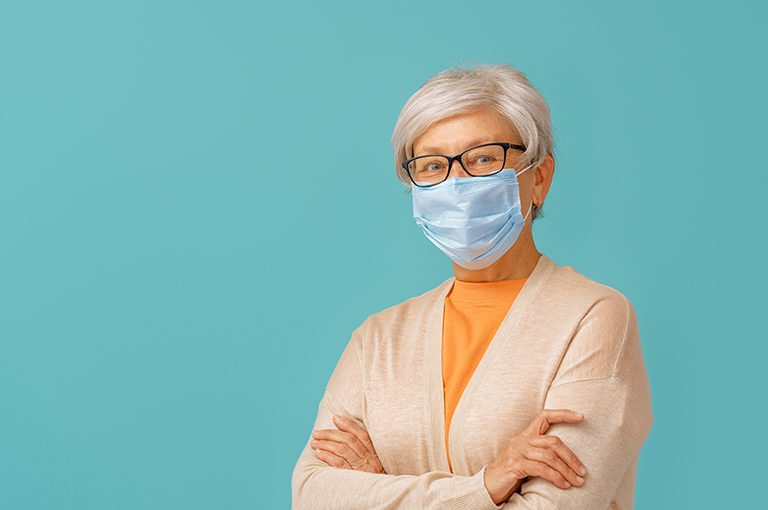Indications for each type of mask inside and outside the dental office during the pandemic

Biosafety standards have always been fundamental to the legal functioning of dental offices. They minimize the risk of cross contamination. Especially now, at the moment we are living, it is important to reinforce some points regarding an essential PPE: the masks! All information passed on in this article was taken from guidelines of national regulatory bodies.
Who should wear masks?
According to the National Health Surveillance Agency, masks should be used to prevent contamination and spread of the coronavirus through droplets and aerosols.
The risk of contamination by healthcare professionals is really great. Thus, it is important to be on top of all the care and understand which are the ideal masks for each case and situation, after all, there is more than one model and they usually confuse many people in their choice and use.
Remember: your patient does not have the knowledge of biosafety that you do!
This is the time to help contain the disease and instruct your patients in this regard. For them, you must indicate the mask made of fabrics as: only cotton, cotton with elastane or non-woven as TNT. In this latest fabric model, it is recommended that the weight be 20 - 40 g / m².
In addition, it is recommended that the mask has 3 layers: the first, on the front, with non-waterproof fabric. The second, in half, with breathable fabric. And the last, which is in contact with the face, of cotton fabric.
The outer layer and the filter element must be resistant to the penetration of airborne fluids (fluid repellency). It is worth mentioning that this recommendation is only for individuals who do not work directly with health.
For the patient, it is important that they go to the mask office, remove it by the elastic band and place it in a plastic bag. After the end of the treatment, he must replace the mask for the return home.
Guidance on using the fabric mask:
- Put the mask on so that it covers your mouth and nose. Make sure that it has covered all the spaces between the face and the mask;
- While in use, avoid touching the front of the mask;
- Remove the mask using the appropriate technique (always remove by the side strips);
- After removal or whenever you accidentally touch a used mask, hand hygiene must be performed;
- Do not use the mask for a long time (maximum of 3 hours), change after this period and whenever it is damp, with apparent dirt, damaged or if it is difficult to breathe;
- Hand hygiene with water and soap or 70% alcohol preparation when you get home;
- Remove the mask and put it to wash;
- Repeat hand hygiene procedures after removing the mask;
- Do not share your mask, even if it is washed.
Do you know how to clean your masks?
- The mask must be washed separately;
- Prior cleaning must be done with running water and mild soap;
- Soak in water, soap and bleach or equivalent (recommends 20 to 30 minutes);
- Allow to dry naturally;
- Iron with hot iron;
- Store in a closed container.
But for healthcare professionals, what is the ideal mask?
In the case of health professionals, according to ANVISA recommendations for dental care during COVID-19, in procedures in which aerosols will be generated, the masks that offer the best protection are: N95 or PFF2.
Is prolonged use released?
This is a fact that generates many doubts among health professionals. But after all, can I or cannot I reuse the NF95 / PFF2 masks or equivalent? Well then, Anvisa says yes! Due to the scarcity of this material on the market, the masks may, exceptionally, be used for a longer period than recommended by the manufacturer if it follows some premises:
- The reused mask should not be shared with other people;
- It must be used, along with the face shield to minimize contamination;
- Before putting on the mask, check that it is in good condition. Therefore, wet, dirty, torn, dented or creased masks should be discarded.
It is worth mentioning that the masks used for a long time lose their promised attributes. Over time, components such as strips and nasal bridge material may degrade. As a result, the quality of the fit and seal can be affected.
How do I remove my mask?
To remove the mask, remove it by the elastic bands, being very careful never to touch its internal surface.
If your mask is ready for the next use, pack it in such a way as to keep it intact, clean, and dry. For this, a paper bag or envelope, plastic packaging or other material can be used, if they are not hermetically sealed.
The mask's elastics must be packed in such a way that they are not contaminated and to facilitate the removal of the mask from the packaging. Important: If in the process of removing the mask there is contamination of the internal part, it must be discarded immediately.
Is it effective to put one mask on top of the other?
According to Anvisa, no! It is not recommended to use the surgical mask superimposed on the N95 mask or equivalent, because this does not guarantee protection from filtration or contamination. In addition to being a great waste, since we live in a scenario of scarcity of biosafety materials worldwide due to Pandemic.
Source: Todos pela Odontologia. Available at: http://todospelaodontologia.com.br/dental-cremer-as-indicacoes-pra-cada-tipo-de-mascara/. Access on: 08/24/2020.
imagem: choreograph, de envatoelements
